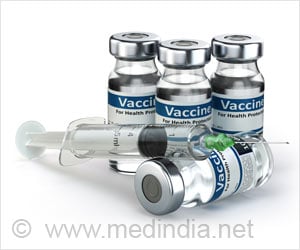In the US, Alzheimer's disease is the fastest growing threat to health. HIV/AIDS and alcohol are severely eroding the health of Russians.

GBD 2010 involves nearly 500 researchers around the world, and is led by the Institute for Health Metrics and Evaluation (IHME) at the University of Washington. Country-specific findings, including for the United States, will be announced on March 5 at the Bill & Melinda Gates Foundation in Seattle, by IHME Director Dr. Christopher Murray and Foundation Co-chair and Trustee Bill Gates. These findings detail health trends for the three Ds: demographics, disease, and disability, for 187 countries. The work, which involves researchers at more than 300 institutions in 50 countries, generated 1 billion estimates for health challenges large and small, and was funded by the Bill & Melinda Gates Foundation.
Commentaries on the global findings will be published on March 5 in The Lancet. In addition, IHME is releasing a brief summary of the findings for each country as well as a report on GBD methods and findings called The Global Burden of Disease: Generating Evidence, Guiding Policy."Our goal is to help governments and citizens make well-informed decisions about health policies and investments by arming them with information that is up-to-date, comprehensive, and accurate," said IHME Director Dr. Christopher Murray. "With these new ways of making the data understandable, people everywhere for the first time can see the incredible progress being made in health and the daunting challenges that remain."
IHME expects that the GBD and its online visualization tools will allow health researchers worldwide to engage in a broader discussion with policymakers and the general public about how health challenges should be measured and how improvements in health should be gauged. "We created these data visualizations to help people explore how diseases, injuries, and risk factors impact their health and the health of people around the world," said IHME Director of Data Development Peter Speyer. "The visualizations make it easy for users to look at the big picture or drill into details by location, age group or gender, and instantly have clear and up-to-date data at their fingertips."The data and visualizations reveal new developments and persistent problems in global health. "The GBD allows us to both celebrate progress and keep the momentum going around the world's urgent, unfinished health agendas," said Dr. Rafael Lozano, one of the GBD researchers and a Professor of Global Health at IHME. "We cannot stop caring about things like HIV and malaria or childhood and maternal deaths. At the same time, we need to make similar progress in addressing mental health issues, road traffic injuries, and musculoskeletal disorders." The GBD is already influencing health policy.
Countries are using the findings to measure progress against their peers. The United Kingdom worked closely with the GBD Collaborative to benchmark its performance in improving health against other European countries and the United States. The findings are being published in The Lancet."We found that the UK had made significant improvements in health overall, but those were masking serious problems in certain age groups," explained Dr. Alan Lopez, Head of the School of Population Health at the University of Queensland and one of the founders of GBD. "If you look at adults aged 20 to 54, increases in deaths from alcohol and drugs overshadowed the substantial reductions in deaths from greater cervical cancer screenings and efforts to reduce road traffic injuries."
The UK is now looking at ways to address these challenges. GBD reveals surprising health trends around the world. The global population is increasing and getting older, but those longer lives are also filled with more sickness and disability. In the US, for example, the average life expectancy of women increased from 78.6 years in 1990 to 80.5 years in 2010, yet only 69.5 of those 80.5 years were lived in good health. Similar and even more dramatic gains can be seen in many developing countries. In Rwanda, life expectancy for men increased from 48.2 years in 1990 to 62 years in 2010, but Rwandan men spent nearly nine of those additional years in poor health.
Advertisement
In Colombia and other parts of Central and South America, violence was the number one killer of young men. Even in Japan, which has one of the best health records in the world, suicide became one of the top causes of death among young women in 2010.People who live into older adulthood are impacted by a range of complex health issues, many of which are disabling but not deadly. In Brazil, and in many countries, low back and neck pain, and other musculoskeletal problems cause a disproportionate amount of disability and health burden. Depression, anxiety, and migraines are other leading ailments in countries rich and poor. In the US, longer life spans have been accompanied by a tremendous increase in the health burden due to Alzheimer's disease. Alzheimer's is now the number 12 cause of health burden in the US, and the number four cause of death. Other wealthy countries have witnessed similar rises.
Advertisement
Source-Eurekalert










